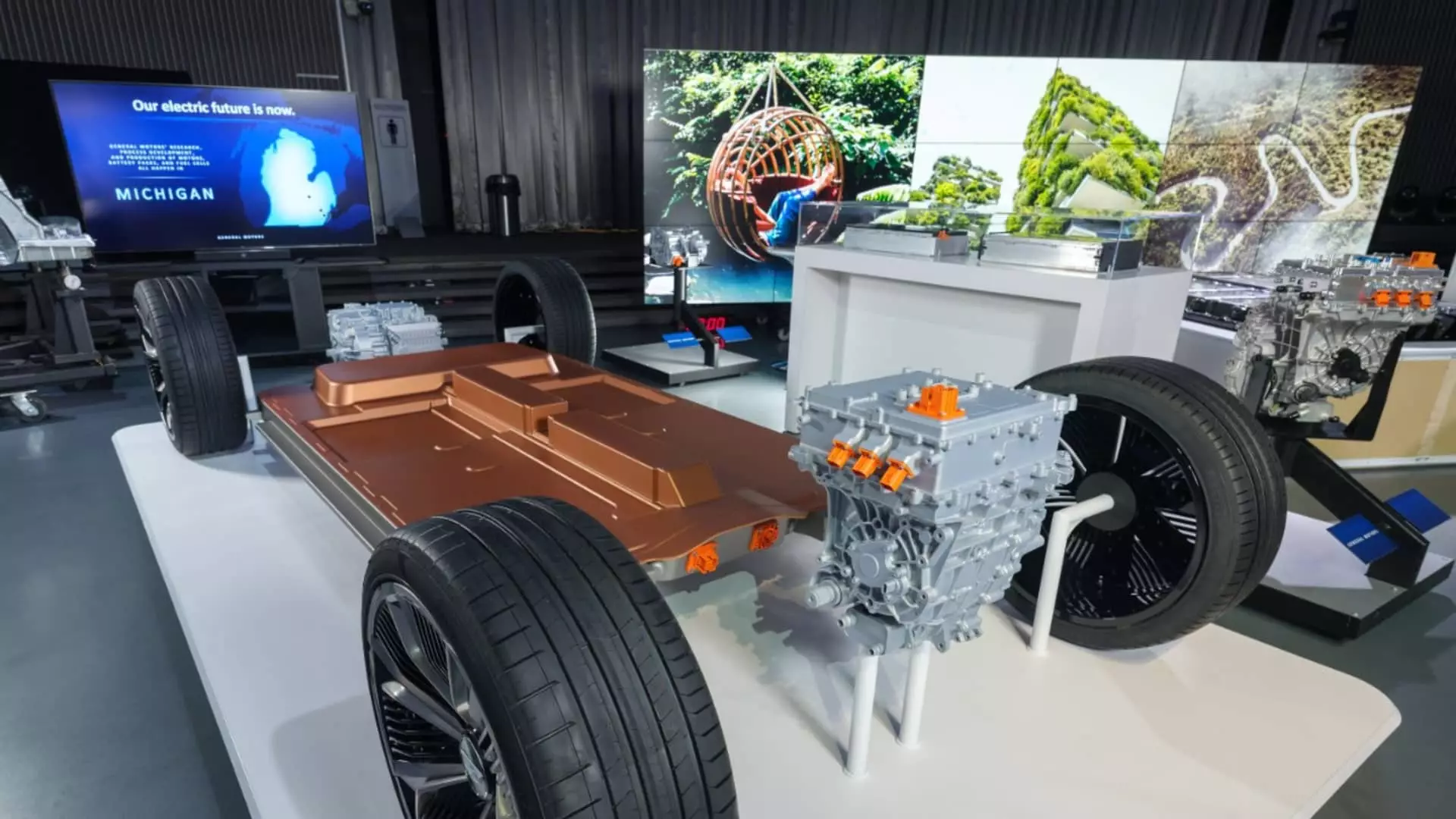In a significant strategic maneuver, General Motors (GM) recently unveiled plans to divest its interest in a $2.6 billion electric vehicle (EV) battery cell plant situated in Lansing, Michigan. This decision to sell its stake to joint venture partner LG Energy Solution is deeply intertwined with the company’s overarching objective to adapt to the evolving EV market and address fluctuations in consumer demand. The agreement, although non-binding, marks a pivotal moment for GM as it seeks to optimize its investment focus in an uncertain economic landscape.
Financial Repercussions and Future Implications
GM anticipates recouping roughly $1 billion through this divestiture, a move that underscores not only its financial prudence but also a realistic appraisal of the current market conditions. The Lansing facility, spanning an impressive 2.8 million square feet, was prepped to be the third operational battery cell plant within the joint venture known as Ultium Cells LLC, a collaboration that aims to boost GM’s battery production capabilities. While this divestiture may seem counterintuitive in the face of rising electric vehicle demand, it is an astute recognition of the slower-than-anticipated uptake from consumers, along with regulatory uncertainties surrounding federal incentives for EV manufacturing.
The dynamics of joint ventures often dictate the velocity of advancements within the automotive sector. GM’s engagement with LG Energy Solution, which started five years ago, illustrates a commitment to synergy; however, recent decisions indicate a more surgical approach to investment. According to GM executives, this restructuring will not affect their stake in the joint venture or impede plans to develop additional plants in collaboration with Samsung SDI, a competing battery supplier. This nuanced maneuver demonstrates GM’s balancing act—maintaining robust partnerships while refining focus in a rapidly changing industry.
Operational Transition and Job Implications
As part of the finalized arrangement, LG Energy Solution will gain immediate access to the Lansing plant to initiate equipment installation. Currently employing nearly 100 individuals, the facility is expected to commence operations by year’s end. This transition raises questions about job stability and the long-term employment implications for the existing workforce. The shift in control may herald changes in operational philosophy and workforce requirements, thus creating uncertainty not just for employees, but also for the local economic landscape.
Innovation Through Partnership
In tandem with this divestiture, GM has announced an extension to its long-term battery technology partnership with LGES, aiming to include prismatic cells in their production capabilities. These flat, rectangular battery cells promise to revolutionize the design and functionality of EV batteries. Kurt Kelty, GM’s vice president for battery cell and pack, emphasized the importance of this innovation, citing potential reductions in weight and cost, alongside streamlined manufacturing processes. This focus on optimizing battery technology points to GM’s forward-thinking strategy to align its offerings with the evolving needs of EV consumers.
As the electric vehicle market continues to evolve, GM’s proactive changes indicate an understanding of the burgeoning challenges on the horizon. With the backdrop of ongoing discussions regarding federal EV incentives and an unpredictable economic landscape, the need for adaptation becomes increasingly clear. GM’s commitment to fostering efficient and innovative battery technologies, in collaboration with strategic partners like LG Energy Solution, may position the company favorably amidst the complexities of the market.
GM’s decision to divest its stake in the Lansing battery plant symbolizes a broader recalibration to navigate the future of electric mobility effectively. The inclination to optimize investments, coupled with strategic partnerships and innovations in battery technology, may propel GM to better meet the demands of a rapidly changing industry. The automotive giant appears poised to leverage its extensive experience and collaborative efforts to carve out a sustainable path in the competitive landscape of electric vehicles. Ultimately, as the company pushes forward, it underscores an ongoing commitment to innovation, efficiency, and responsiveness, which will be crucial as they steer towards a sustainable future.

Leave a Reply